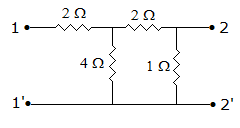Electronics and Communication Engineering - Electronic Devices and Circuits
Exercise : Electronic Devices and Circuits - Section 10
- Electronic Devices and Circuits - Section 14
- Electronic Devices and Circuits - Section 27
- Electronic Devices and Circuits - Section 26
- Electronic Devices and Circuits - Section 25
- Electronic Devices and Circuits - Section 24
- Electronic Devices and Circuits - Section 23
- Electronic Devices and Circuits - Section 22
- Electronic Devices and Circuits - Section 21
- Electronic Devices and Circuits - Section 20
- Electronic Devices and Circuits - Section 19
- Electronic Devices and Circuits - Section 18
- Electronic Devices and Circuits - Section 17
- Electronic Devices and Circuits - Section 16
- Electronic Devices and Circuits - Section 15
- Electronic Devices and Circuits - Section 1
- Electronic Devices and Circuits - Section 13
- Electronic Devices and Circuits - Section 12
- Electronic Devices and Circuits - Section 11
- Electronic Devices and Circuits - Section 10
- Electronic Devices and Circuits - Section 9
- Electronic Devices and Circuits - Section 8
- Electronic Devices and Circuits - Section 7
- Electronic Devices and Circuits - Section 6
- Electronic Devices and Circuits - Section 5
- Electronic Devices and Circuits - Section 4
- Electronic Devices and Circuits - Section 3
- Electronic Devices and Circuits - Section 2
41.
Assertion (A): The Laplace transform of a ramp is 1/s2.
Reason (R): The integral of a unit step function gives an impulse function.
Answer: Option
Explanation:
Integral of unit impulse gives unit step function.
42.
An RL series circuit is initially relaxed. A step voltage E is applied. If t is time constant, voltage across R and L will be equal at t =
Answer: Option
Explanation:
vR = E(1 - e-t/t) and vL = E e-t/t or 1 - e-t/t = e-t/t. This happens at t = t in 2.
43.
For the two port of figure, z11 is


Answer: Option
Explanation:

44.
A certain network has two ideal voltages sources and a large number of ideal resistances. The power consumed in one of the resistances is 4 W when either of two sources is active and the other source is active and the other source is short circuited. When both sources is short circuited.When both sources are active, the power consumed in the same resistor would be
Answer: Option
Explanation:
If currents of both sources add, total current would be twice and power is four time, i.e., 16 W. If currents subtract, net current and power are zero.
45.
A coil of resistance R and inductance L is connected in series with 5 μF capacitor. The source frequency is equal to resonance frequency and circuit current is 0.5 A. Another 5 F capacitor is connected in parallel with the above capacitor. The circuit current will be
Answer: Option
Explanation:
Since C increases, the circuit will not be in resonance. Therefore, current decreases (In series resonant circuit current is maximum at resonance).
Quick links
Quantitative Aptitude
Verbal (English)
Reasoning
Programming
Interview
Placement Papers


